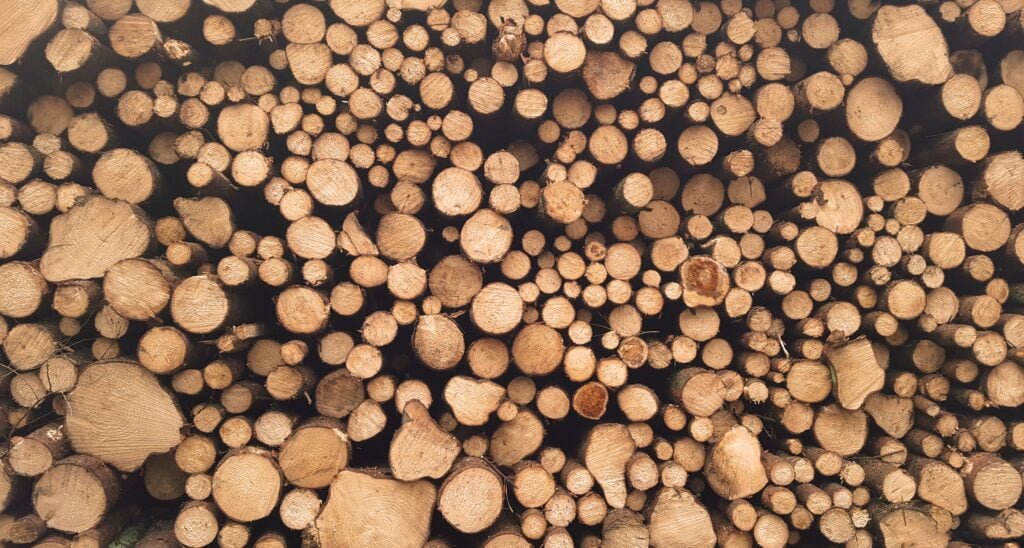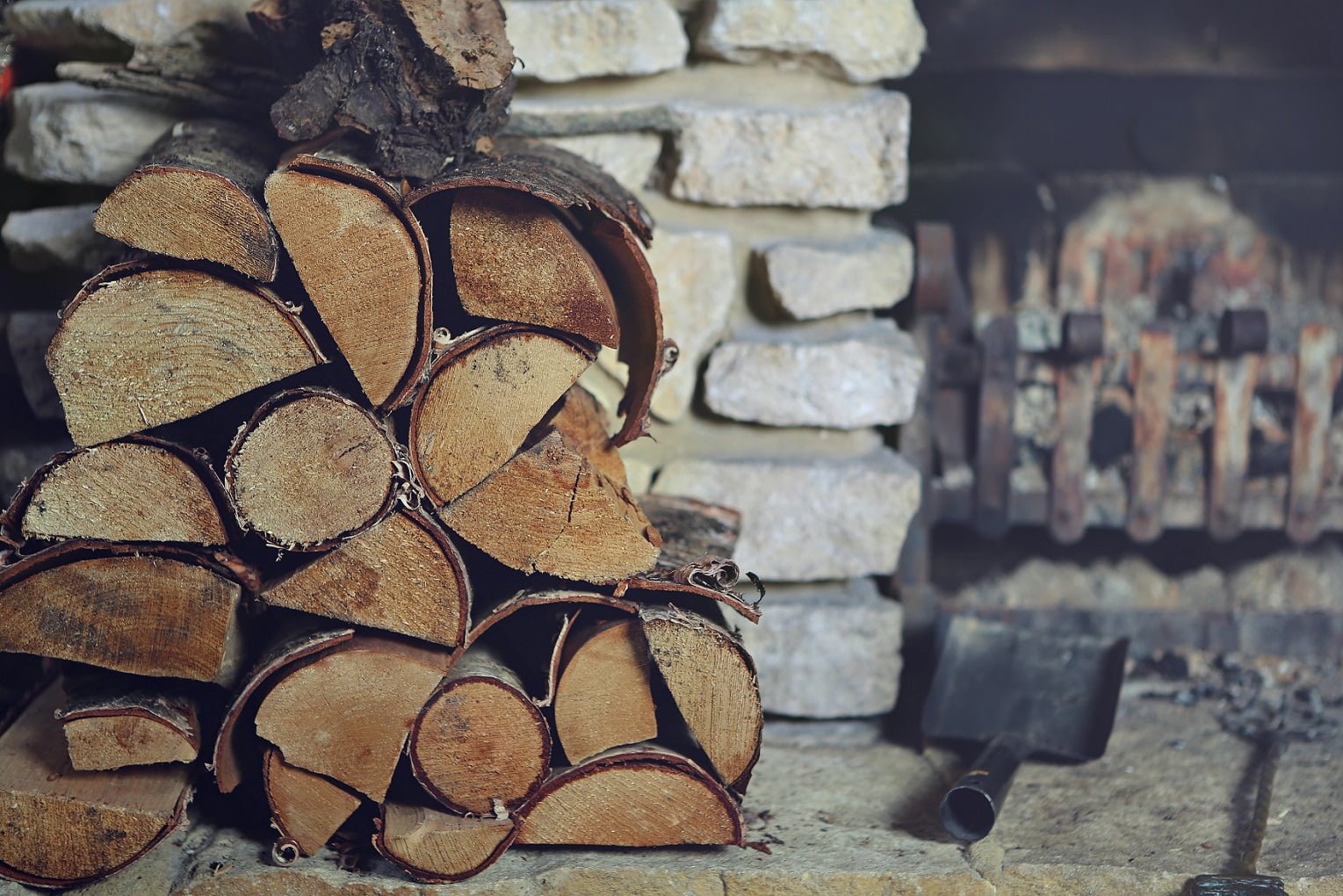Nature has always been a source of inspiration and wonder, captivating us with its diverse and enchanting scents. Among the many treasures it holds, scented woods stand out as a fragrant symphony that beckons us to embark on a captivating olfactory journey.
Welcome to the enchanting world of scented woods! In this article, we’ll explore different types of scented woods, consider factors for choosing the right one, and discover the ultimate scented wood for a perfect fireplace experience.
Get ready to be captivated by the fragrant wonders that await you in this aromatic journey. Let’s begin!
What are Scented Woods?
Scented woods are types of wood that have a nice smell. When you burn, crush, or use them in different ways, they release pleasant fragrances. Examples of scented woods include sandalwood, cedarwood, and rosewood. These woods are often used to make things like incense, perfumes, and candles because of their appealing scents.
People also use them in religious ceremonies, meditation, and even as natural bug repellents. Scented woods add a delightful aroma to our surroundings and help us feel connected to nature.
Types of Scented Woods
There is a diverse range of scented woods, each with its own unique fragrance profile and characteristics.
Here are some notable types of scented woods:
- Sandalwood – Sandalwood is renowned for its warm, creamy, and woody scent. It is commonly sourced from species like Indian Sandalwood (Santalum album), Australian Sandalwood (Santalum spicatum), and Hawaiian Sandalwood (Santalum paniculatum). Sandalwood is widely used in perfumes, incense, and skincare products.
- Cedarwood– Cedarwood emits a rich, earthy, and woody aroma. Varieties like Western Red Cedar (Thuja plicata) and Atlas Cedarwood (Cedrus atlantica) are popular choices. Cedarwood is often used in fragrances, essential oils, and as a natural insect repellent.
- Agarwood (Oud) – Agarwood, also known as Oud, has a complex and luxurious scent with deep woody, resinous, and balsamic notes. It is derived from the Aquilaria tree, specifically when it becomes infected and produces a dark, fragrant resin. Agarwood is highly prized and used in perfumes, incense, and traditional ceremonies.
- Palo Santo – Palo Santo, meaning “holy wood” in Spanish, exudes a sweet, citrusy, and resinous aroma with hints of mint. It is obtained from the Bursera graveolens tree, mainly found in South America. Palo Santo is often used in smudging rituals, spiritual practices, and as an aromatic aid for relaxation.
- Rosewood – Rosewood emits a sweet, floral, and woody scent reminiscent of blooming roses. Brazilian Rosewood (Dalbergia nigra) and Indian Rosewood (Dalbergia latifolia) are well-known varieties. Rosewood is valued for its use in furniture, musical instruments, and high-quality essential oils.
- Cypress – Cypress wood possesses a fresh, clean, and slightly resinous fragrance. It is commonly associated with the Cupressus genus, such as Mediterranean Cypress (Cupressus sempervirens). Cypress wood is used in perfumery, as well as in the construction of furniture and decorative items.
- Juniper – Juniper wood emits a distinctive scent that is both woody and aromatic, often with a hint of pine. Juniper is commonly sourced from species like Eastern Red Cedar (Juniperus virginiana) and Juniperus communis. It is used in the production of incense, essential oils, and in crafting traditional tools and utensils.
- Thuya Thuya wood, also known as Moroccan Thuya or Thuja wood, has a captivating fragrance that combines earthy, balsamic, and cedar-like notes. It is native to the Atlas Mountains of Morocco and is highly valued for its unique scent and beautiful grain patterns. Thuya wood is often used in decorative items and handicrafts.
Factors to Consider when Choosing a Scented Wood
When choosing a scented wood, there are several factors to consider to ensure you select the most suitable option for your needs.

Here are some key factors to take into account:
- Aroma: The fragrance of the scented wood is one of the most important factors to consider. Determine the type of scent you prefer, whether it’s warm and woody, floral and sweet, resinous and balsamic, or any other characteristic. Consider the specific notes and how they align with your personal preferences or the intended use of the scented wood.
- Intensity: Scented woods can vary in terms of their intensity. Some woods have a subtle and gentle aroma, while others have a more potent and pronounced scent. Consider the level of intensity you desire based on the purpose or setting in which the wood will be used. For example, a stronger fragrance may be suitable for a large room or open space, while a milder scent may be preferable for personal use or smaller areas.
- Application: Determine the intended use of the scented wood. Are you looking for wood to use in incense, candles, perfumes, or personal care products? Different woods may be better suited for specific applications. For example, some woods are known for their longevity and slow burn, making them ideal for incense, while others are valued for their suitability in perfumery.
- Sustainability: Consider the sustainability and ethical aspects of the scented wood you are considering. Some woods, such as agarwood, have been overharvested and are endangered species. Look for responsibly sourced options or sustainable alternatives to ensure you are making an environmentally conscious choice.
- Availability and Cost: Availability and cost can also be factors to consider. Some scented woods may be more readily available and affordable, while others may be rarer and more expensive. Set a budget and consider the accessibility of the wood you are interested in to make an informed decision.
- Cultural Significance: Scented woods may hold cultural or spiritual significance in certain traditions or practices. If you are interested in incorporating scented woods into specific rituals or ceremonies, research the cultural background and associated meanings to choose a wood that aligns with the intended purpose.
- Personal Preference: Ultimately, personal preference plays a significant role. Everyone’s scent preferences differ, so choose a scented wood that resonates with you and brings you joy. Consider experimenting with different woods to discover new fragrances and expand your olfactory experiences.
Top 8 Scented Woods in the Market, Based on Popularity and Demand
These scented woods have established themselves as iconic and beloved options in the market, admired for their captivating aromas and versatile applications in various industries.
- Sandalwood – Sandalwood is highly regarded for its warm, creamy, and woody fragrance. It is widely used in perfumes, incense, and skincare products. Indian Sandalwood (Santalum album) and Australian Sandalwood (Santalum spicatum) are among the most sought-after varieties.
- Cedarwood – Cedarwood has a rich, earthy, and woody scent that is both comforting and grounding. It is commonly used in fragrances, essential oils, and as a natural insect repellent. Western Red Cedar (Thuja plicata) and Atlas Cedarwood (Cedrus atlantica) are popular choices in the market.
- Agarwood – (Oud): Agarwood, also known as Oud, is highly valued for its complex and luxurious fragrance. It possesses deep, woody, resinous, and balsamic notes. Agarwood is used in perfumes, incense, and traditional ceremonies. Due to its rarity and limited supply, Agarwood is considered a prized and premium scented wood.
- Palo Santo– Palo Santo, meaning “holy wood” in Spanish, offers a sweet, citrusy, and resinous aroma with hints of mint. It is used in smudging rituals, spiritual practices, and for relaxation purposes. Palo Santo is particularly popular for its cleansing and uplifting properties.
- Rosewood – Rosewood emits a sweet, floral, and woody scent reminiscent of blooming roses. Brazilian Rosewood (Dalbergia nigra) and Indian Rosewood (Dalbergia latifolia) are well-known varieties. Rosewood is highly valued for its use in furniture, musical instruments, and high-quality essential oils.
- Cypress – Cypress wood, with its fresh, clean, and slightly resinous fragrance, has gained popularity in recent years. Mediterranean Cypress (Cupressus sempervirens) is the most recognized variety. The invigorating scent of cypress wood is used in perfumery, as well as the production of furniture and decorative items.
- Juniper – Juniper wood’s distinctive scent, combining woody and aromatic notes, has captured the attention of fragrance enthusiasts. Varieties like Eastern Red Cedar (Juniperus virginiana) and Juniperus communis are highly sought after. Juniper is used in the production of incense, essential oils, and traditional crafts, adding a touch of natural beauty and wilderness to various products.
- Thuya – Thuya wood, with its captivating fragrance featuring earthy, balsamic, and cedar-like notes, has gained popularity as a unique scented wood. Native to the Atlas Mountains of Morocco, Thuya wood is highly valued for its aromatic qualities and is used in decorative items and handicrafts.
In Conclusion: These top 8 scented woods dominate the market due to their captivating aromas and widespread demand.
From the timeless allure of Sandalwood to the luxurious Agarwood (Oud), each wood offers a distinct olfactory experience that resonates with consumers.
Whether used in perfumery, incense, or personal care products, these scented woods continue to enchant and captivate fragrance lovers worldwide.
Which Scented Wood Reigns Supreme for the Ultimate Fireplace Experience?
Cedarwood is the best choice for a scented wood to use in a fireplace. Cedarwood emits a rich, earthy, and woody aroma that creates a cozy and inviting ambiance. It has been traditionally used as a firewood option due to its pleasant fragrance when burned.
The scent of Cedarwood adds a natural and comforting element to the atmosphere, enhancing the overall experience of sitting by the fireplace. Additionally, cedarwood’s natural insect-repelling properties make it a practical choice for outdoor fire pits or when dealing with pests.
Step-by-Step Guide: Creating the Perfect Scented Fireplace with Cedarwood
Note: Always prioritize safety when using a fireplace. Follow proper fire safety guidelines, keep flammable items away from the fire, and ensure you have a functioning smoke detector and fire extinguisher nearby.

By following these steps, you can create a memorable and aromatic experience with a cedarwood-scented fireplace. Enjoy the comforting fragrance and the cozy ambiance it provides.
Step 1: Gather Supplies
Collect the necessary supplies for your scented fireplace setup. You will need: Cedarwood logs or chips, Fireplace tools (such as tongs and a poker), Matches or a lighter and Firewood or kindling (if required)
Step 2: Prepare the Fireplace
Ensure your fireplace is clean and free of debris. Remove any ashes or leftover wood from previous fires. Open the damper to allow proper ventilation and prevent smoke buildup.
Step 3: Arrange the Cedarwood
Place the cedarwood logs or chips strategically within the fireplace. Consider the desired burn time and intensity of the fragrance. If using logs, position them in a way that allows airflow while ensuring stability. If using chips, spread them evenly over the fire bed.
Step 4: Add Firewood or Kindling
If necessary, add firewood or kindling to help ignite the fire. Ensure the wood is dry and properly seasoned for optimal burning. Arrange the firewood in a suitable pattern, leaving enough space for air circulation.
Step 5: Ignite the Fire Using matches or a lighter
Carefully light the kindling or firewood. Start from multiple points to ensure an even burn. Exercise caution during this step to avoid accidents. Close the fireplace screen or door if you have one.
Step 6: Adjust Airflow
Monitor the fire’s progress and adjust the damper or vents to regulate airflow. Proper ventilation will help maintain a steady burn and ensure the cedarwood’s fragrance is released evenly throughout the space. Strike a balance to avoid excessive smoke or quick burnout.
Step 7: Enjoy the Scented Fire
Sit back, relax, and savor the aromatic ambiance created by the burning cedarwood. Allow the fragrance to envelop the room, providing a warm and comforting atmosphere. Remember to practice fireplace safety and never leave the fire unattended.
Step 8: Maintain the Fire
As the fire burns, periodically add more cedarwood logs or chips to sustain the scented experience. Carefully place them on the fire, considering the fire’s current intensity and the desired fragrance level. Use fireplace tools to safely handle the wood.
Step 9: Extinguish the Fire
When you’re ready to conclude the scented fireplace experience, allow the fire to burn down naturally or use a fireplace tool to safely extinguish the flames. Dispose of any remaining ashes and wood debris responsibly, following local regulations.
Enchanting World of Scented Woods
Scented woods offer a captivating journey into nature’s aromatic wonders. From sandalwood’s timeless allure to agarwood’s captivating darkness, each wood holds a unique story.
Used in perfumery, spirituality, or to bring nature indoors, scented woods connect us with enchanting aromas. Embrace their power and embark on a fragrant voyage into nature’s heart.
Also Read: The Best Gardening Buckets for Every Garden Need
Well, what do you think about the article?
Did you enjoy reading “Scented Woods: A Fragrant Journey into Nature’s Aromas“? We really hope that you have enjoyed this scented woods journey. If you have any thoughts or comments about this post, please feel free to share them in the comment section below. We appreciate your feedback and would be glad to hear from you.
To see more content like this check the guides section of Money For My Beer.

Chief Editor and Website Owner.
Hey, I’m Ryan, a software guy and the owner of Money For My Beer. I’m the one making sure all our posts on the site are awesome.
I usually handle tech stuff that might not be super interesting to everyone, like programming enterprise software, apps, games, and websites. Cool stuff, right? I also help clients with SEO and sometimes create games.

